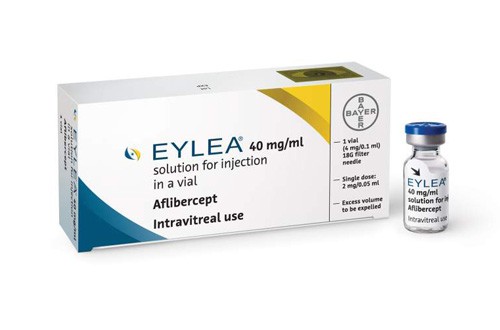
Bayer is set to challenge Novartis’ dominance in the treatment of the eye condition wet age-related macular degeneration (AMD) in England and Wales after it received backing for its medicine Eylea.
Novartis has seen its drug Lucentis (ranibizumab) become the standard-of-care in the country for wet AMD – the most common cause of blindness in the western world – after it was recommended in 2008 by cost-effectiveness watchdog for medicines the National Institute for Health and Care Excellence (NICE).
However, Eylea (aflibercept) today received final draft guidance from NICE recommending the drug in the same condition putting it on course to compete with Lucentis on the NHS once final guidance is published in August this year.
The drugs will compete on an equal footing, with NICE restricting the recommended use of Eylea to the same level as Lucentis, which includes limiting the available patient population to those who show signs the condition has been getting worse and for whom there is no permanent damage to the part of the eye called the fovea.
According to NICE, there is also little to separate the price and efficacy of each drug, each of which is recommended at an undisclosed discount through a patient access scheme.
“[T]he differences in total costs and QALYs [quality adjusted life years] were very small,” said NICE in a statement.
One aspect of therapy that Bayer is likely to capitalise on is the frequency of treatment, with Eylea recommended to be given monthly for three consecutive doses, followed by one injection every two months.
This compares to the recommendation for Lucentis, which says treatment should start with one injection per month for three consecutive months, followed by a phase in which patients are monitored for visual acuity every month at a hospital, where a further dose can be administered if needed.
“A fixed dose injection with Eylea every two months with no monthly monitoring in between is a welcome help as it can potentially reduce the number of hospital visits for most patient,” commented Dr Sobha Sivaprasad, consultant ophthalmologist at Moorfields Eye Hospital and King’s College Hospital, London.
“This will make life easier for patients with wet AMD and their families, and will also help the NHS planning the future of eye care services.”
Despite the prospect of competition for its own product, Novartis said it “welcomes” NICE’s decision to recommend Eylea as an additional treatment for patients with wet AMD.
“Wet AMD is a rapidly progressing disease and patients respond differently to treatment,” said the Swiss pharma firm.
Novartis also gave its take on monthly monitoring for patients taking Lucentis: “The need for frequent monitoring of patients receiving an anti-VEGF therapy [such as Eylea or Lucentis] is recognised by the Royal College of Ophthalmologists in its Guidelines on the treatment of AMD, highlighting the importance of this element of patient care.”
Lucentis also has NICE recommendations in two other eye conditions – visual impairment due to diabetic macular oedema and visual impairment due to macular oedema secondary to retinal vein occlusion – giving Novartis some advantage over Bayer, with Eylea recommended solely in wet AMD.




